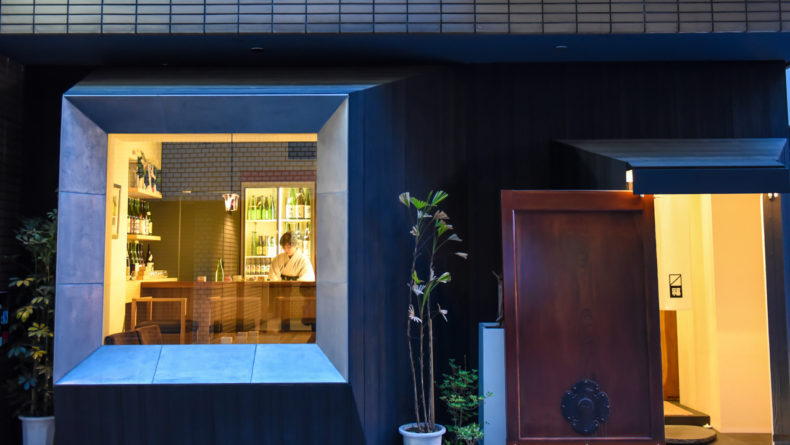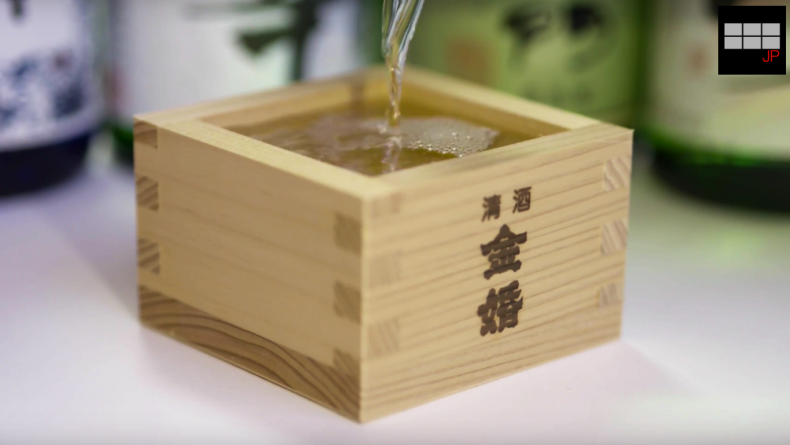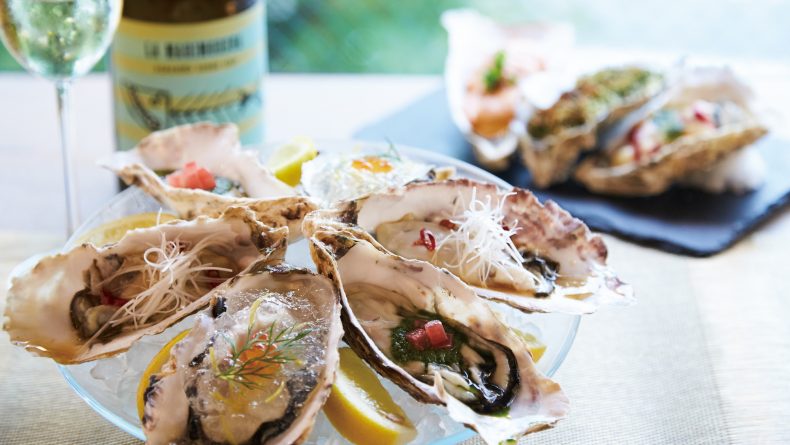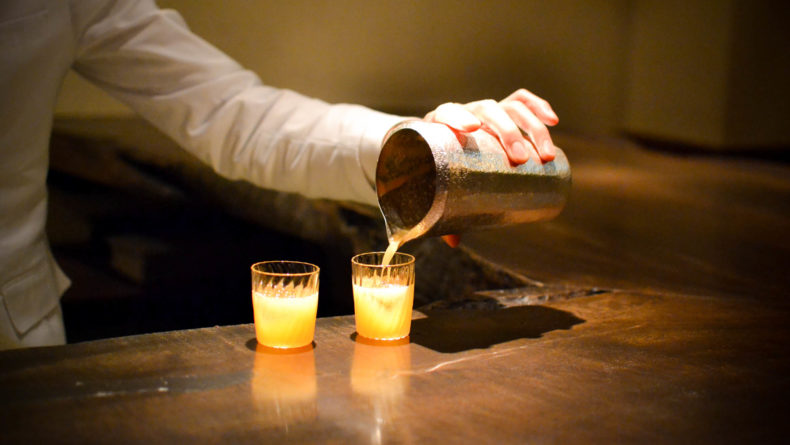Sake Scene: The Newbies’ Guide To Nihonshu
How, Where, And When To Taste Japan's Soul Drink
Living (or traveling) in Japan is never fully completed without a drink of its own traditional booze. But unless you're an expert in the field, it may be a bit of a puzzle to figure out what to order, how to drink it, and more so — how to enjoy it.
You’ve seen it with your foreign friends on their first visit to an izakaya — wondering why the sake is flowing out of the glass into a strange-looking square box; trying to figure out the many labels; and then confidently ordering “sake,” to which the waiters respectfully reply “which one?” Yes, the sake in this country is just as deep as its oceans.
The first and foremost thing you need to know about Japanese sake — or nihonshu — is that it’s primarily broken down into two very large groups – seishu (清酒: clear sake), the one you can drink, and ryorishu (料理酒: cooking sake), the one I recommend you don’t. The word “sake” in itself is often misunderstood among non-Japanese people as the name for seishu, or more commonly known as, nihonshu (日本酒). The kanji for sake (酒) means just “alcohol” — including your beer.
In this guide, readers will get to know different variations of the drink, manners associated with it, five recommended spots in Tokyo to sip it — and my personal favorite three nihonshu to try! 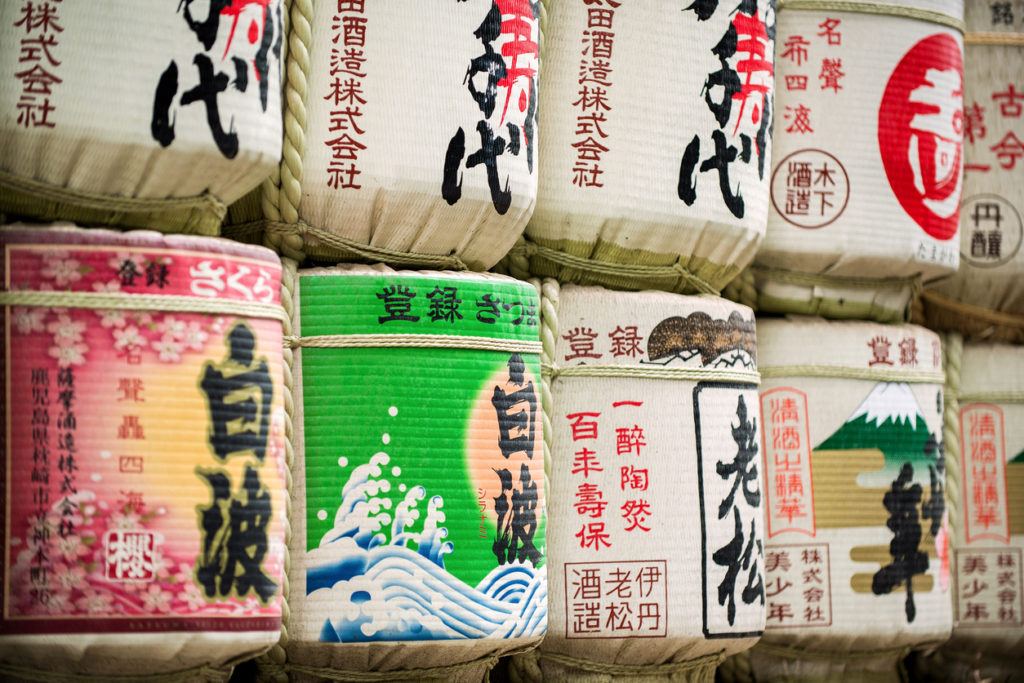
Know your sake: Variations
Below are the different grades of nihonshu from highest to lowest. The grades are determined by the polished ratio of each grain of rice, known in Japan as seimai-buai (精米歩合). Generally, the lower the number, the purer the brew (and the more it’ll cost you). Also, a lower percentage often results in a fruitier nihonshu (not necessarily sweeter), whereas a higher percentage will taste more like rice.
- Junmai Daiginjo-shu (純米大吟醸酒: Pure rice, Extra Special brew) – Rice Polishing Ratio, or senmai-buai (SB), below 50%
- Daiginjo-shu (大吟醸酒: Extra Special brew) – SB, below 50%
- Junmai Ginjo-shu (純米吟醸酒: Pure rice, Special brew) – SB, below 60%
- Ginjyo-shu (吟醸酒: Special brew) – SB, below 60%
- Tokubetsu Junmai-shu (特別純米酒: Rice, Koji rice) – SB, below 60% or produced by special brewing method
- Tokubetsu Honjozo-shu (特別本醸造酒: Rice, Koji rice, Distilled alcohol) – SB, below 60% or produced by special brewing method
- Junmai-shu (純米酒: Pure rice) – SB, below 70%
- Honjyozo-shu (本醸造酒: Genuine brew) – SB, below 70%
Most of the nihonshu above have two or three ingredients – rice, koji rice and distilled alcohol. Only the junmai-shu’s do not include the distilled alcohol.
Serve it right
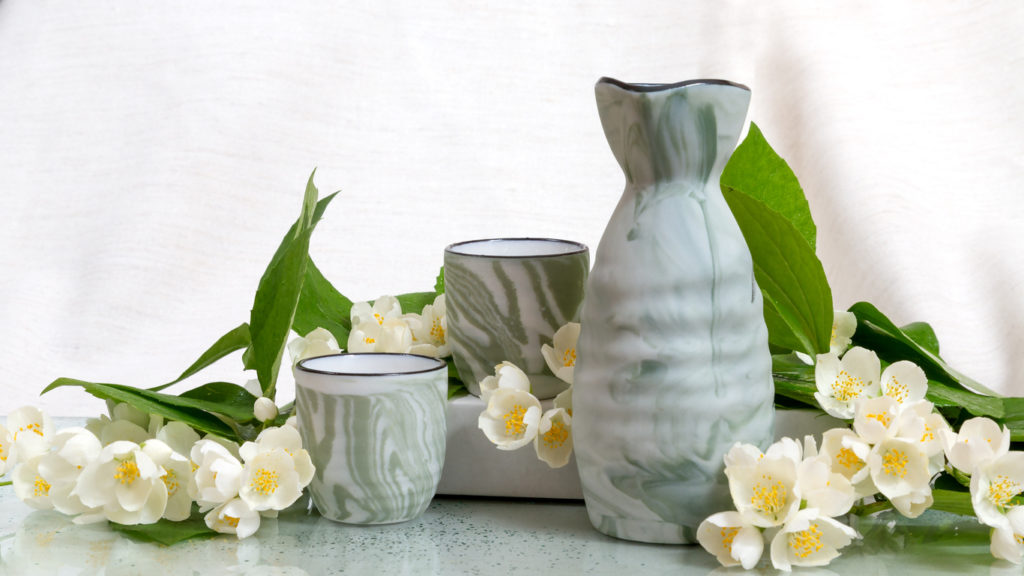
Tokkuri and o-choko
Nihonshu is served in three different ways: chilled (reishu 冷酒), room temperature (joon 常温 or hiya 冷や) or heated (atsukan 熱燗). Depending on the preference of the drinker, the quality of the nihonshu, and the season, the recommended temperature of the nihonshu may vary.
Nihonshu is traditionally served in what looks to be an equivalent of a milk jug (without a handle) called tokkuri and divvied up into little espresso-typed cups called o-choko. This is especially common when serving the nihonshu hot or warm, as it keeps the liquid from cooling. But in recent years, this is not always the case. Nihonshu is almost always heated immediately before serving in order to keep the aromas and flavors.
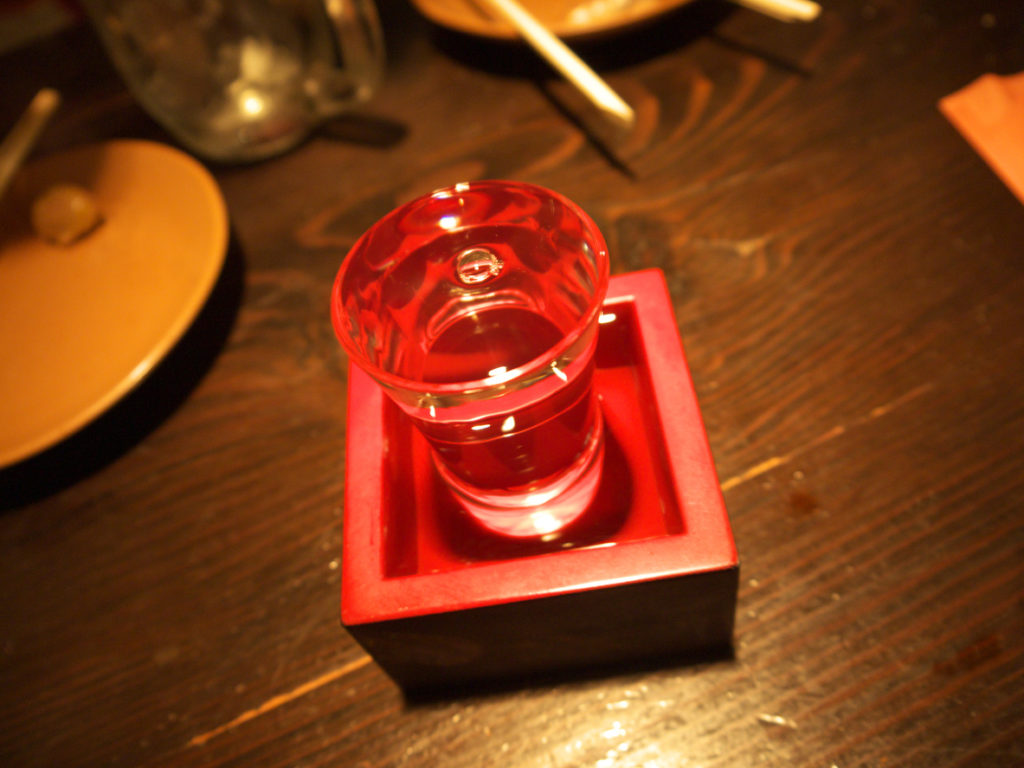
Masu
Another traditional way of serving is the masu, a wooden box made out of hinoki (cypress) or sugi (Japanese cedar) (yeah, that one that puzzled your friend at the izakaya). Originally used for measuring rice, the masu holds exactly 180 ml, and as a sign of generosity, many bars and restaurants will place a glass in the masu and/or a small plate underneath, and fill all containers ‘til you get a perfect meniscus. So, no if this happens, it wasn’t a mistake!
Watch the manners
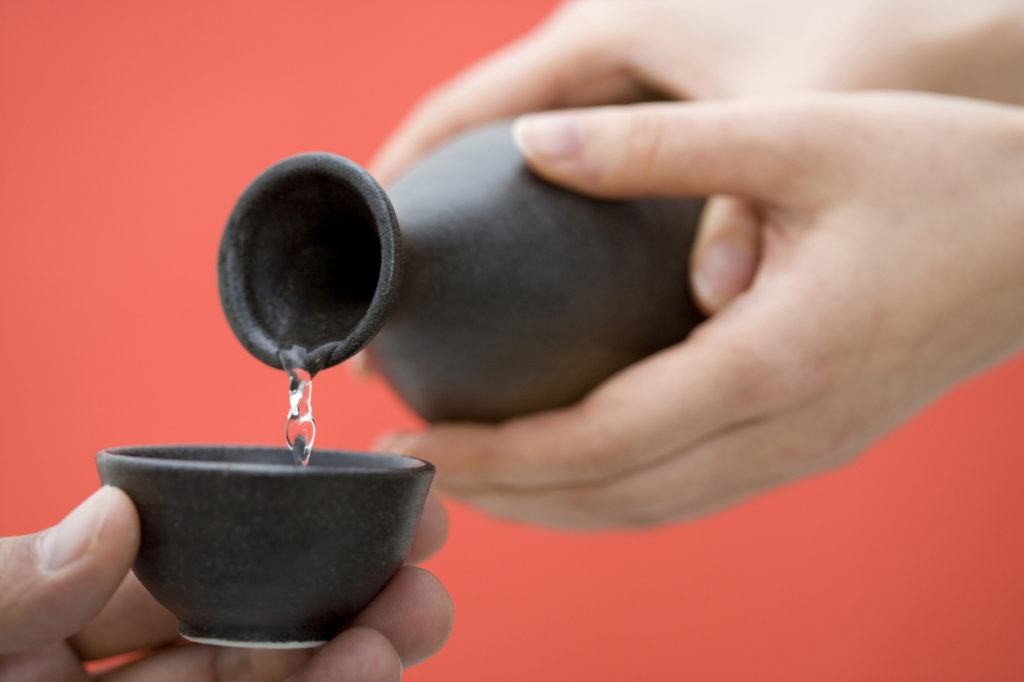
If you’re planning to drink nihonshu at home this may not apply, but in Japanese culture — OK, I hate to say it, but — you’re expected to (read “should”) pour your table-partner’s drink. And, when yours is poured in return, you should hold the brim of the o-choko with one hand and place the other on the bottom.
When drinking, although you may be tempted to do a “sake shot,” given the size of the cup, you should sip slowly, like you would a fine wine. Nihonshu is also often paired with things such as raw fish and other foods of delicate flavors, so enjoy the set one bite and sip at a time!
Favorite hotspots
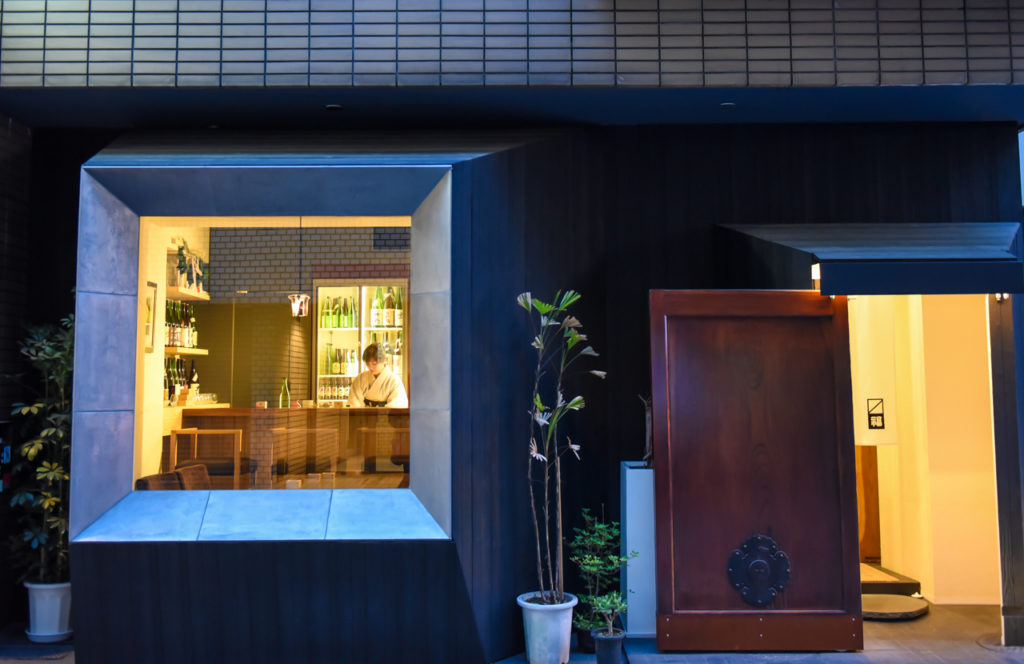
Sake bar Masufuku
Good news is that recently more and more restaurants and bars are starting to realize that sake can be so much fun, so we’re continuously seeing more nihonshu bars opening in the city, reaching a wider audience than the typically associated oyaji groups. Here are five personally recommended in Tokyo.
- Sakeba is a cozy little bar just a few minutes walk from Shibuya station’s south exit that specializes in nihonshu from various areas in Japan and Japanese traditional food. It has a relaxing wooden interior and brilliant service. Address: 3 Chome-15-2 Shibuya, Shibuya-ku, Tokyo
- Shubo in Ikebukuro is the real thing as we can guess from its name: the kanji “酒母” literally means “Sake Mother.” The best thing about it: it has an all-you-can drink sake plan! Address: 4 Chome-23-6 Higashiikebukuro, Toshima-ku, Tokyo
- Amanogawa based at the Keio Plaza Hotel in Shinjuku, is the bar to be at if you’re in the mood for some refinery and luxury. Chances are, the bill will reflect it. Address: 2-2-1 Nishishinjuku, Shinjuku-ku, Tokyo
- Shu Shu in Kanda, will become your local and the best place to relax and unwind after a long and stressful day — especially if you want to enjoy nihonshu with French dishes. Address: 5-5 Konyacho, Kanda, Chiyoda-ku, Tokyo
- Sake Bar Masafuku close to Tokyo Tower, is a lovely recently opened little bar with refreshing sake and scrumptious food. Stop by if you want to have a chat over the counter with the bar’s hostess Yukari Yanaba, the wonderwoman behind the bar’s creation: from interior to the endless sake cups. Address: 2-11-20 1F Shibadaimon, Minato-ku, Tokyo
My Top 3 Recommended Nihonshu
If you’re not sure where to start when choosing your nihonshu, go for the following three …. and nothing can go wrong!
- #3 Jyuyondai (十四代), Yamagata prefecture
View this post on Instagram
- #2 Kubota (久保田), Niigata prefecture
- #1 Dasai (獺祭), Yamaguchi prefecture
All three of my personal favorites range from the highest premium to the lower, more affordable grades of nihonshu. I recommend you ask one of the swanky nihonshu bars (mentioned above) for a tester of each before settling in with your liquid gold. Kampai to a brilliant summer ahead!












